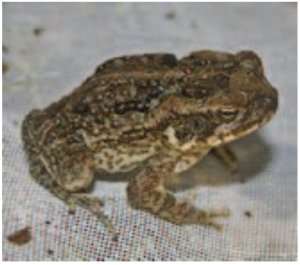 Cane toads are very dangerous to your dog. They are everywhere in south and central Florida. If your dog gets one in his mouth he will most certainly die within 15 minutes or so. While it’s possible to survive with emergency vet care, there’s very little time. I’ve personally talked to three dog owners who have lost their pets in this manner.
Cane toads are very dangerous to your dog. They are everywhere in south and central Florida. If your dog gets one in his mouth he will most certainly die within 15 minutes or so. While it’s possible to survive with emergency vet care, there’s very little time. I’ve personally talked to three dog owners who have lost their pets in this manner.
We, my spouse and I, kill several cane toads in our back yard and townhouse property every year. They are an invasive species not native to the US. The Tampa area used to be at the northern edge of their range, but I’m sure that’s creeping northward with global warming, and we’re certainly seeing an increasing number at our home. This happens yearly during our summer rains.
Cane toads were introduced to the South Florida sugar cane fields to control insects and is one of those great ideas gone wrong. They’re dangerous because they exude a toxin that’s deadly to other animals. If a dog or cat gets his mouth on one, the dog has about 15 minutes to live suffering a horrible, painful death usually of a heart attack. A bite on the toad isn’t necessary, the toxin invades through the mucus membranes in the mouth and eyes.
The size of the toad – another name is “Giant Bufo” – doesn’t matter. They are just as poisonous when tadpoles. They are laid as eggs – about 25,000 in one clutch, and I guess fortunately, are cannibals so they feed on each other and only a few survive. But given time and a food supply they can grow quite large – 6 to 9 inches. The ones we have been seeing are about five inches long, but I’m assuming these are fairly young.
The prescribed method of humanely killing them is to put them in a zip-lock bag and freeze them for a couple of days. The State of Florida says that they are to be killed when found. They are easily identified – cannot be mistaken for a friendly frog. They are mottled brownish and are extremely well hidden in soil or vegetation or mulch until they feed just after dark. We have found just a couple in daylight, but usually find them from their motion from a flashlight. They are relatively easy to catch, but if they detect pursuit they’ll move faster than you could pursue. We use a frog gig on a 5′ pole. We keep a “toad kit” at our back door consisting of the frog gig, gallon ziplock bag and plastic disposable gloves.
The State of Florida website states that if you have what looks like a toad that is 4 inches in length, it’s definitely a toad. Their legs are shorter in proportion to their bodies than a frog, and if you’re interested, the Wikipedia site has a recording of their sound. They’re quite noisy after a rain, and the sound is distinctive.
Our main concern is our Wheaten, Guinness. For many years now we cannot turn him out for his final poop, we have to walk him on a leash in our own back yard, scanning ahead with a flashlight, and it’s that walk that we will find a toad, sometimes a close call. We also notice a decline in our lizard population, a sure sign we have a resident toad. They are capable of limited climbing a tree, maybe a couple of feet to escape but I don’t think that’s a regular activity. As a part of their natural defense, if you stop pursuing, they’ll stop, too.
That’s to give a predator a chance to put his mouth on the toad, with probable fatal results. There are pictures available on the internet, just Google “cane toad”. There are huge areas of Australia that have been invaded and there are some interesting YouTube videos where people are attempting to deal with them including grinding them up to manufacture fertilizer.
https://en.wikipedia.org/wiki/Cane_toad

